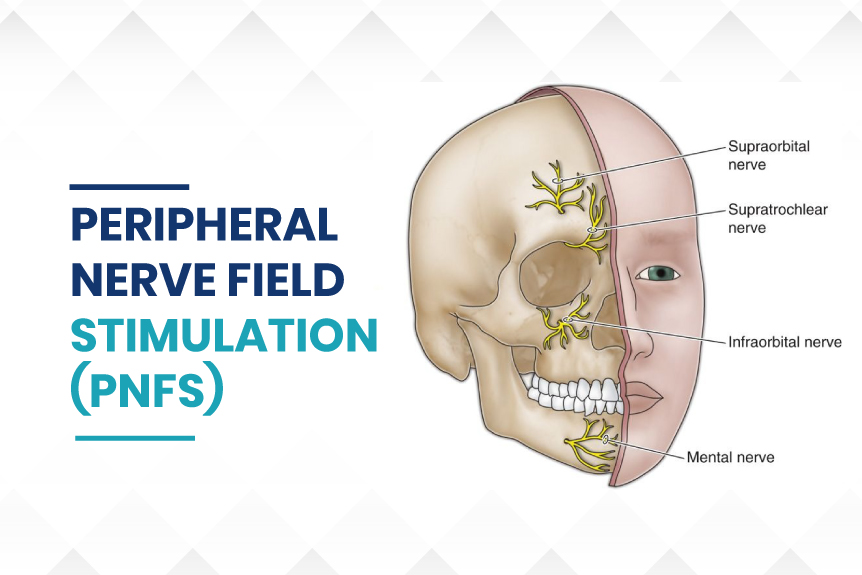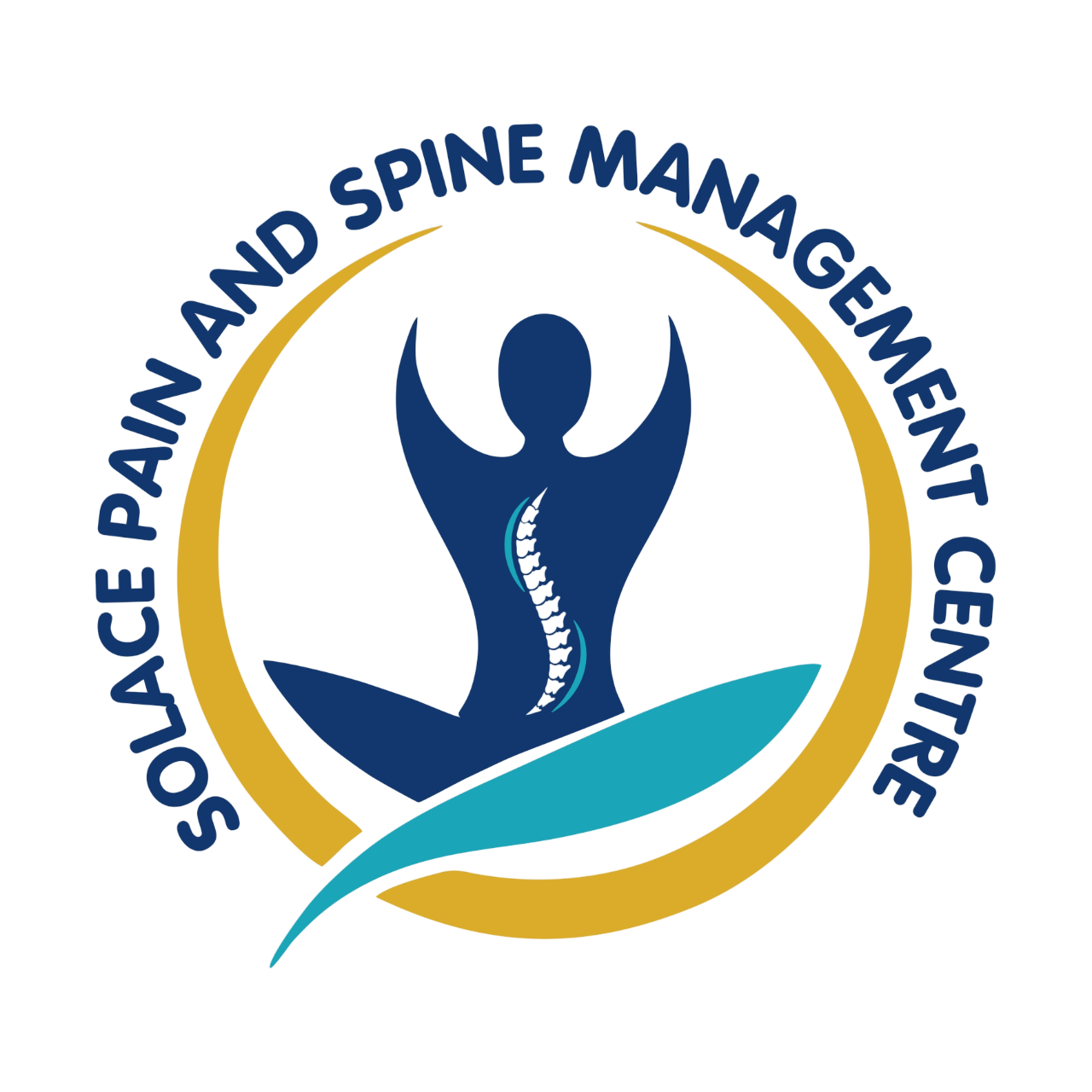
Living with chronic pain can have debilitating effects in almost every aspect of one’s life. Peripheral Nerve Field Stimulation (PNFS) is one of the advanced pain relief techniques that aims to relieve pain from patients with difficult chronic conditions and have not benefited much from standard treatments. Peripheral Nerve Field Stimulation (PNFS) techniques are unique since they target an efferent branch of pain pathways.
Chronic pain is defined as Pain that persists for more than 12 weeks, even after the underlying cause has been resolved. It can have an imposing impact on virtually on every aspect of life. A procedure that delivers rest where patients have physical resistance can be regarded as an advanced procedure that offers long-lasting eased and functional restorations.
How does PNFS Work?
PNFS is a recently developed paraspinal neuromodulation technique performed using a subcutaneous implantable pulse generator. It employs the concept of electrical force that helps in the reversal treatment of inflammation, by administering electric currents and pulses from implants. The pulses help in changing the neuron activities, keeping pain in check.
To get the most out of Peripheral Nerve Field Stimulation (PNFS), understanding the following steps is crucial:
1. Evaluation and Diagnosis
Before recommending PNFS, a pain management specialist conducts a thorough evaluation, including:
A detailed medical history review.
Physical examination to identify pain patterns.
Imaging studies (MRI, CT scan) to assess nerve damage or structural abnormalities.
Discussion of prior treatments and their effectiveness.
2. Trial Phase
Using a minimally invasive approach, a temporary electrode is placed under the skin surrounding the region with the pain-sensitive nerves. This electrode connects to a pulse generator, which allows the patient to experience PNFS without the risk of a permanent implant. The duration of the trial phase is between 5 and 7 days, during which time the patient and physician evaluate:
The amount of pain reduction experienced.
The amount of discomfort or side effects produced by the stimulation.
The degree of improvement in quality of life.
If pain relief during the trial phase is considerable (usually over 50%), the patient is regarded as a suitable recipient for the permanent implant.
3. Permanent Implantation Procedure
Upon successful completion of the trial, a new small internal generator is implanted, similar in size to a pacemaker, underneath the skin where it is likely to be concealed in the lower abdomen region or mid-back. Ion electrodes are inserted into the body and gently placed around the affected nerve region. These stimulating electrodes place mild electrical current, which is controlled externally, treating areas of chronic pain. The patient can control the intensity of stimulation using an external remote.
Conditions Treated with PNFS
Patients affected by the following conditions may particularly benefit from PNFS treatment:
- Chronic lower back pain – This is made worse by surgical attempts, which do not seem to alleviate the problem.
- Post surgical pain – Pain that lies inactive for some time, especially when around surgical or cut points.
- Peripheral neuropathy – Pain that arises in nerves as a result of diabetes or other diseases.
- Complex Regional Pain Syndrome (CRPS) – Neuropathic pain that leads to limb suffering and movement disability are highly painful disorders.
- Post-Herpetic Neuralgia (Shingle Pain) – Pain after an active infection of shingles.
- Failed Back Surgery Syndrome (FBSS) – Pain in the back which continues after surgery has been done to the spine.
Advantages of PNFS Over Traditional Pain Management Techniques
- No-Load Pain Management System (PnFS) can be achieved without complex surgical techniques like other acute pain relief methods, making it more efficient in terms of recovery time.
- Overcoming Graded Nerve Stimulation (OGNS) is able to modify only the area affected, restoring nerve function only to places where it is safe to do so.
- OGNS lowers the amount of available opioids, therefore reliance on pain relief drugs is likely to lower due to less negative effects and addiction to such drugs.
- Adjustments can be made to the intensity and frequency of electrical pulses targeting the nerve to ensure the utmost comfort for the patient.
- The device can be interruped or removed if needs be allowing the patient to have more freedom and control.
What to Expect After PNFS Implantation?
Patients are commonly and most often relieved from pain immediately during the trial expert predicted implant phase and that extends to after permanent implantation. The patient is after the procedure instructed to:
Avoid all vigorous activities and exercises for a period of 2 to 4 weeks, giving both proper and ample time to heal.
Go to follow up sessions where changes can be made to how the device works.
Medical guidance is given the go ahead, thereafter normal day to day activity is able to be done.
The overwhelming majority of patients claim a noticeable increase in their daily functional activities, reliance on medication for pain control is lessened, and life quality, in general, is better.
Possible Complications and Consequences
Existence of harm during the process is rare, as it is always the case with the surgical PNFS:
- Mild pain around the device location area.
- Redness or mild swelling on the surface of the skin.
- Moveable Device (rarely, but must be re-positioned).
- Infection (can be avoided if proper hygiene and after care is followed).
Consistent tracking with the pain specialist is the best solution to eliminate the risks and in addition, guarantee that the device works optimally.
Why Solace Pain and Spine Management Centre for PNFS?
For difficult cases of ache problems like persistent back pains, sciatica, and nerve related pains, Solace Pain and Spine Management Centre Peripheral Nerve Field Stimulation offers the most recommended modern options for pain management. We aim to achieve an outcome where patients can be relieved from pain, and regain their mobility, so they can live life to the fullest.
At Solace Pain and Spine Management Centre we provide:-
- Great Attention to Minimally Invasive Procedures – Our pain specialists focus on diagnosis and treatment of complex pain disorders.
- Modern Equipment – We utilize precise pain in modern devices of neuromodulation.
- Individual Approach – Each of the patients has his or her personal needs and pain condition, and all of them are taken into consideration when developing treatment plans.
- Get Back to Normal Life With Little Change – Get back to your daily routine with very little change.
Pain is something that many have lost to. Don’t you be one – start your path to being pain free today. Book your appointment today.
Expertise
EXCELLENTTrustindex verifies that the original source of the review is Google. Dr Manoj Sharma is not only a skilled professional but also compassionate. I felt genuinely cared for during my visit.”Posted onTrustindex verifies that the original source of the review is Google. Best Doctor ,best work,no pain 🥰♥️Posted onTrustindex verifies that the original source of the review is Google. Solace is the only place where a patient can truly relax and be free from pain. Dr. Manoj and his team have exceptional expertise in pain management. I can personally vouch for their incredible care and professionalism. After my experience, I no longer search for any other place — I highly recommend them to anyone in need of pain relief."Posted onTrustindex verifies that the original source of the review is Google. Excellent pain physician 👍👍Posted onTrustindex verifies that the original source of the review is Google. Dr Manoj Sharma is a good experienced doctor in the field of pain management.If anyone suffering from any kind of neck ,head, spine, backbone pain then must consult dr Manoj sharma once.Posted onTrustindex verifies that the original source of the review is Google. Dr. Manoj Sharma is experienced, skilled, and truly cares about their patients. Their personalized treatment helped me recover quickly and improve mobility.Posted onTrustindex verifies that the original source of the review is Google. I had a neck pain from months,some told me about solace ,I had a great experience with the doctors.my neck pain is much better now .
